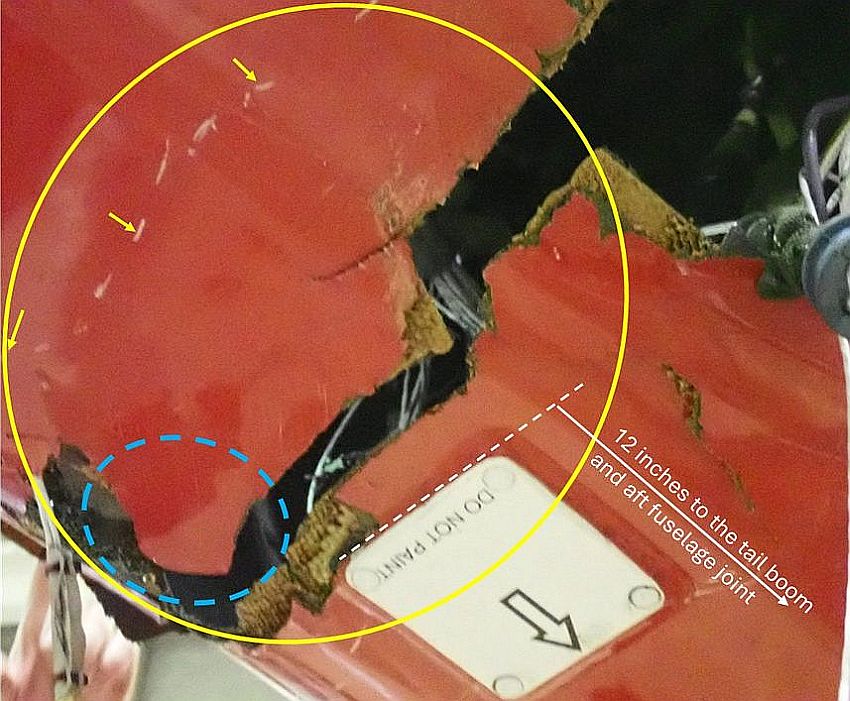September 17, 2025
Director General, Civil Aviation
Transport Canada
On 01 September 2022, a Government of Canada Bell 429 helicopter (registration C-GCQS, serial number 57268) operated by Transport Canada’s Aircraft Services Directorate on behalf of the Canadian Coast Guard, was performing slinging operations under visual flight rules flight from Puvirnituq Airport (CYPX), Quebec, with only the pilot on board.
At 1424 Eastern Daylight Time, the pilot took off from CYPX with a hook attached to a 100-foot sling for the purpose of slinging a toolbox from a site located approximately 2 nautical miles south-southwest of CYPX.
As the helicopter approached the site, a loadmaster was ready to attach the load to the hook of the sling. A supervisor was observing the work from a distance to ensure the safety of the operation.
As the loadmaster was about to grab the hook, the supervisor noticed the helicopter yawing to the right. The helicopter then started descending and the supervisor yelled to the loadmaster to move away quickly. The helicopter struck the ground hard in an upright position and rolled over onto its left side. The pilot exited the helicopter on his own and no one was injured.
The Transportation Safety Board of Canada investigation into this occurrence (A22Q0107) is ongoing.
Following the occurrence, an examination of the wreckage revealed that delamination in the laminate composite face-sheets of the honeycomb sandwich tail boom structure was present on the bottom surface of the tail boom between the aft edge of the radio altimeter antenna (fuselage station [FS] 373), as illustrated by the solid yellow circle in Figure 1, up to the boundary illustrated by white chalk marks and highlighted by the yellow arrows (approximately FS 380).
The TSB laboratory performed various scanning electron microscope examinations of material coupons from this area and signs of fatigue failure were identified in an irregularly shaped area of approximately 2 inches by 1 inch located approximately 4 inches aft of the fracture line (dashed blue circle in Figure 1).

Fatigue failure of the composite material indicates that the delamination was present before the accident sequence. Delamination, if left undetected can compromise the material’s integrity, which could ultimately lead to structural failure.
The investigation has not yet determined the impact of this fatigue failure on the occurrence helicopter during the sequence of events leading to the loss of control in flight. However, any fatigue failure present on a critical structure of an aircraft warrants immediate attention.
The foregoing is provided for whatever follow-up action is deemed appropriate.
The TSB would appreciate being advised of any action that is taken in this regard. Upon completion of investigation (A22Q0107) the Board will release its report into the occurrence.
Yours sincerely,
Original signed by
Craig Johnston
Director of Investigations, Air